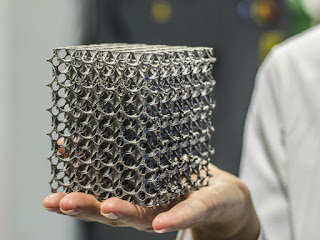Metal 3D printing, also known as additive manufacturing, provides for the creation of complex metal parts by layering metal powders and, depending on the application, selectively sintering, fusing, or melting the powders using a high-powered laser or electron beam. This process offers numerous advantages over traditional manufacturing methods, including reduced waste, increased design freedom to create complex components, and faster production times. The industry applications of metal 3D printing are vast and growing rapidly. Metal 3D printed components are used in aerospace (for lightweight components with complex designs), automotive (for customized parts and prototypes), medical (for implants and prosthetics), and even jewelry manufacturing. The ability to create intricate metal parts with high precision has opened up new possibilities across a variety of industries.
3D Metal Printing Requires Low to Ultra-Low Oxygen Environments
3D printing processes require inert, low to ultra-low oxygen (i.e., nearly oxygen-free) environments to protect the integrity of the finished printed parts. Undue exposure to oxygen, even in small amounts, can result in various defects, such as porosity, oxidation, corrosion, and reduced mechanical properties. Porosity refers to small voids or gaps within a printed part that can compromise its structural strength. Oxidation results in surface discoloration, weakened structural integrity, and compromised part performance. Reduced mechanical properties can result from brittleness or reduced tensile strength caused by excessive oxygen exposure. In addition, dust from the metal powders can be combustible when exposed to oxygen. Some metals, such as titanium and aluminum, can burn quickly, at extremely high temperatures and, in some cases, may cause violent explosions.
To create the desired low oxygen environments, 3D metal printing facilities utilize inert gases—typically argon or nitrogen—within their build chambers. These inert gases deplete oxygen from the build chambers, creating stable printing environments, preventing fire hazards by keeping combustible dust inert, and reducing irregularities and defective elements.
Oxygen Analyzers Help Prevent Product Impurities
Oxygen analyzers are critical to monitoring and regulating oxygen levels within the build chambers during 3D metal printing operations. By utilizing a top-quality oxygen analyzer, metal 3D printer operators are able to monitor and maintain optimal oxygen levels throughout the printing process. An O2 analyzer helps ensure that printed parts are free of imperfections and meet required design specifications. Analyzers continuously track oxygen levels to provide real-time data on oxygen concentration, allowing for immediate adjustments if necessary.
PureAire Trace Oxygen Analyzers
PureAire Monitoring Systems' industry-leading line of Trace Oxygen Analyzers includes products built with both low parts-per-million (ppm), or low percent level O2 sensors, which are designed to operate effectively under continuous inert environments. The Analyzers have remote sensors that are placed directly within the build chambers to continuously monitor oxygen levels.
Depending on user needs, our Trace Oxygen Analyzers can be programmed to detect ultra-low oxygen concentrations, from as low as .0.01 ppm up to 1,000 ppm, as well as higher (albeit still low) oxygen concentrations, from 0% up to 25%. They can operate in a vacuum of 20 Torr or less, and their zirconium oxide sensor cells do not need an oxygen reference gas for proper operation. In the event of undesired changes in oxygen levels, our Analyzers will sound alarms, alerting personnel to take corrective action.
PureAire's Trace Oxygen Analyzers measure oxygen 24/7, with no time-consuming maintenance required. Our long-lasting zirconium sensors provide accurate readings, without calibration, for up to 10 years.






